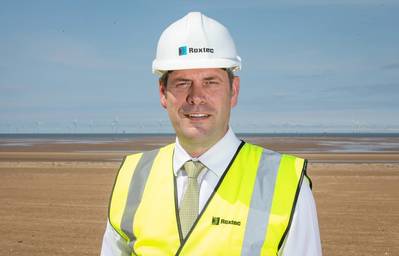International cable seal manufacturer Roxtec has delivered a sealing solution to support a new £1.3 billion ($1.7 billion) offshore wind farm in the English Channel.
Roxtec designed and supplied all cable seals involved in the Rampion Offshore wind farm, located 13km off the coast of Sussex.
In April, the topside for the Rampion substation departed Rosyth for the project site and the first of 116 wind turbines began to be installed. A process which will continue throughout 2017.
The site has a target capacity of 400 MW and is expected to be completed in 2018. It will occupy an area of 72 square km, close to three times the size of Manhattan Island in New York City.
Roxtec UK managing director Clive Sharp said the Rampion contract adds to a growing portfolio of work in the offshore renewables market, which includes more than 40 projects involving offshore wind farms in Europe.
“This contract involved supplying seals for single-core cables, both high and medium voltage, in the bulkhead and deck areas of the platforms,” he said. “We designed a customized solution, involving trefoil formation cable seals for medium-voltage switchgear and split plates for high-voltage and export cables. While carrying out the design process our engineers have also delivered training to ensure effective installation and management of the seals.
“Roxtec benefits from extensive experience of sealing cables on offshore platforms. Our solutions are particularly suited to this market because they are flexible and versatile. They can be used for many applications in wind turbines, from control cabinets to generators and converters. In addition, they are easy to install, inspect and maintain.
“Safety is also of paramount importance to the offshore wind sector where Roxtec’s seals provide certified safety guarding against fire (A0-A60), gas, water pressure, corrosion and provide cable retention. The sealing system we have supplied to the Rampion project will meet the long-term demands through the lifecycle of the wind farm.”
A significant milestone was reached in November 2016 as installation of all 116 turbine foundations was completed on schedule. Transition pieces were later fitted onto foundations and now sit approximately 20 meters above sea level ready to hold the turbines.




